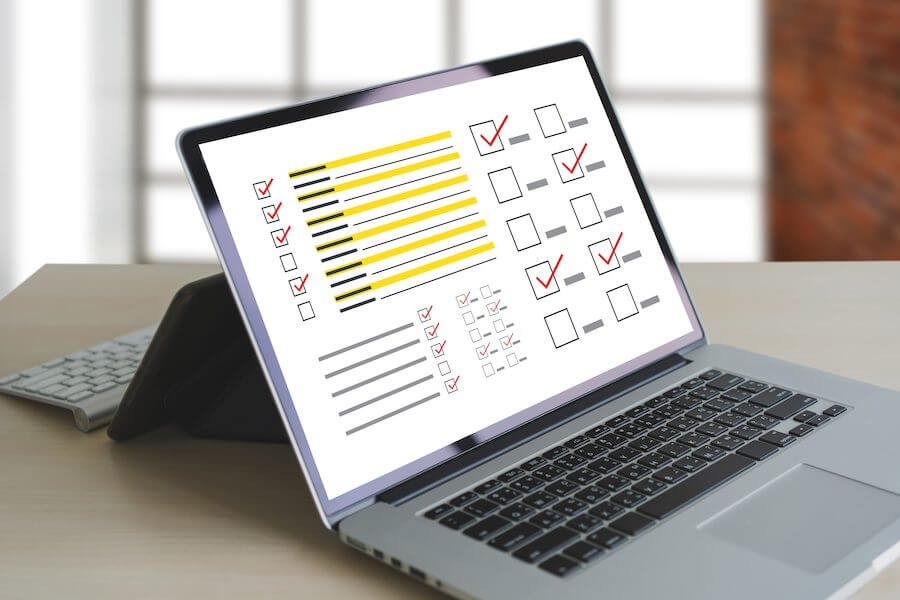SWOT is an extremely useful tool when it comes to making important decisions about your business or project for best possible results. SWOT is an analysis of possibilities, opportunities and business success. SWOT stands for: Strengths, Weaknesses, Opportunities, and Threats.
It is a framework that helps you plan and think strategically by ensuring that there are no ‘blind spots’ that you discover later on. Here we will provide many SWOT analysis templates in PowerPoint, Word, Excel and PSD formats and will show you how to conduct the analysis with SWOT examples of major brands.
SWOT Templates
If you are in a time crunch and need a quick tool to help you get your SWOT organized, then we strongly recommend you look into using SWOT templates. These come in a variety of styles and are easy to use. Simply download a template design that suits your needs. Open it in Microsoft Word or PowerPoint program and proceed to enter your data. The advantage of a SWOT template is that all of the steps are already put in order for you. Very useful for the small business owner, or those new to the concept.
SWOT Analysis Templates (PowerPoint)
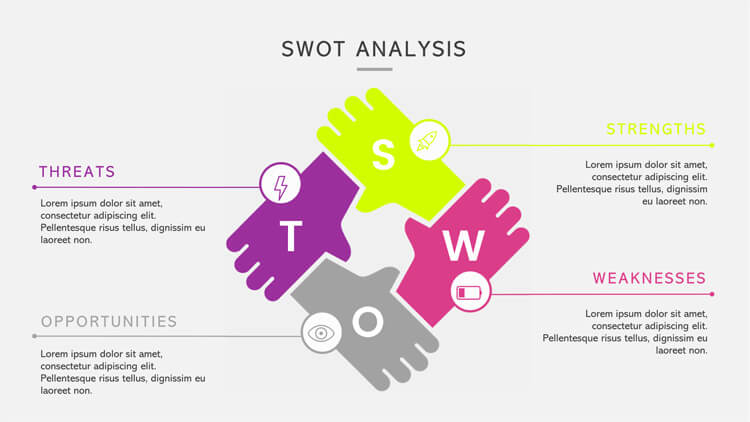
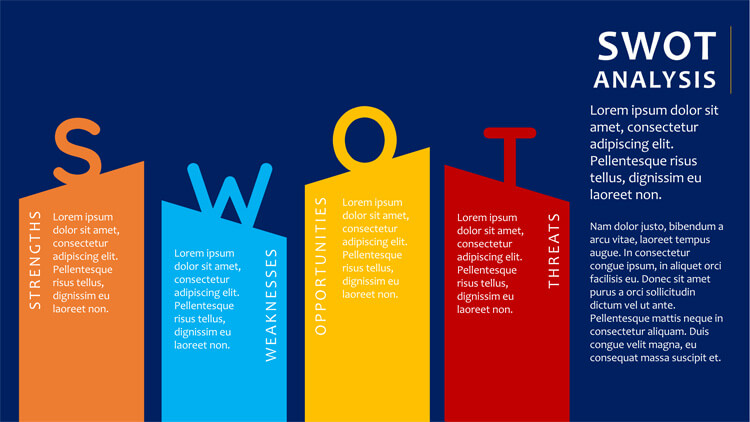
SWOT employee analysis (PowerPoint)
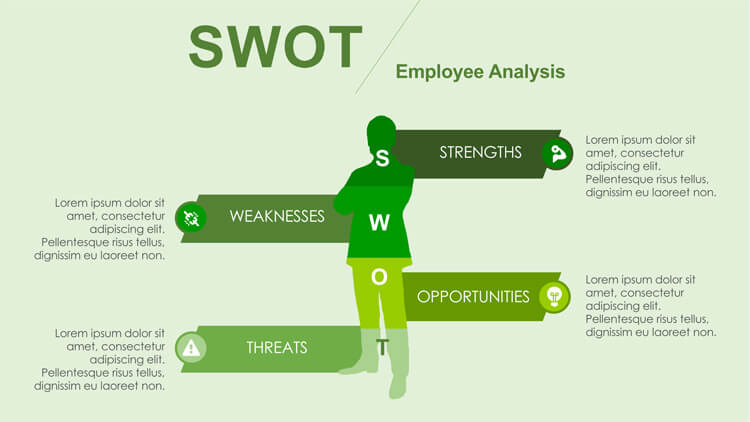
SWOT internal/external analysis
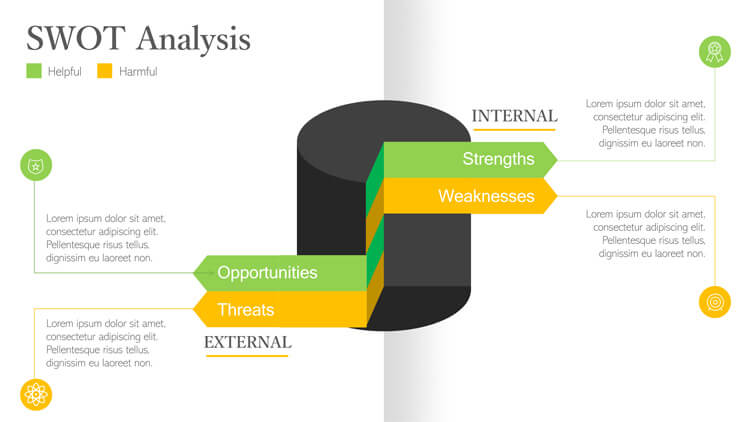
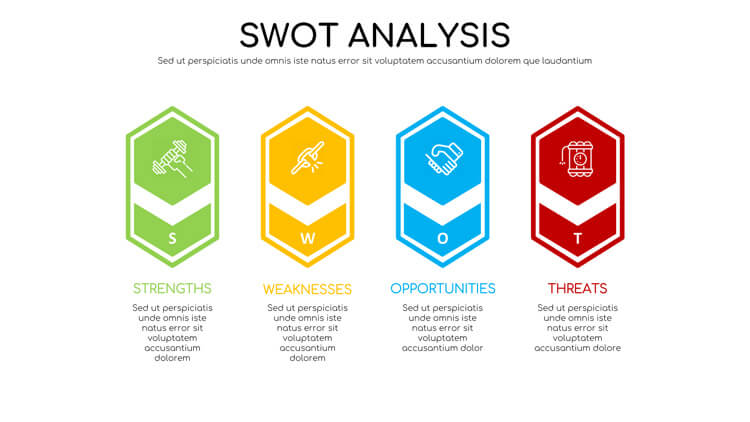
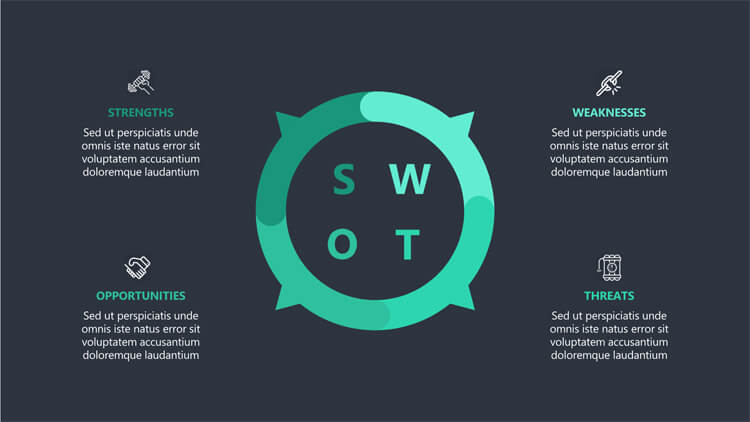
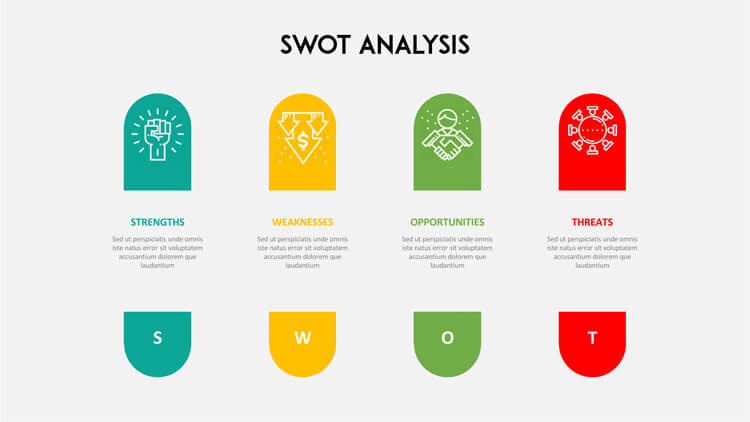
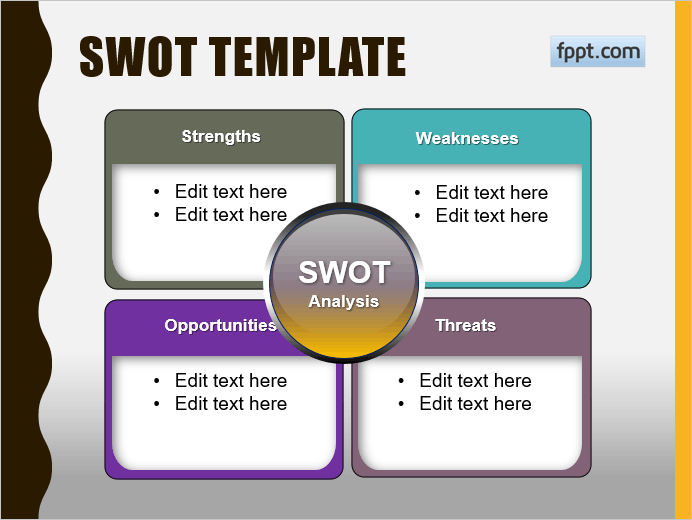
Components of SWOT Analysis
Although the contents within each component of the analysis may differ from case to case, the basic components will remain the same.
The following are the basic components of the analysis:
Strengths
This is obvious. It stands for all the elements of your business which when combined, move you forward toward your goal. These elements can be anything from the design of your logo, your research and development team, to the materials chosen for the manufacturing process. In short, anything that proves valuable to the success of your enterprise.
Questions to ask include:
- What makes us successful?
- Why do clients love our products/services?
- What makes us better than our competitors?
Weakness
This part might not be that easy to find, or even to admit to. Basically, it includes all things, no matter how amazing the idea, that holds you back. Take a good look at your competitors. If they are thriving, then see if what works for them, will work for you.
- What elements can be improved?
- How successful have past strategies been?
- How secure are our finances?
Opportunities
Opportunities are to be nurtured, not avoided. In other words, if your research and development team has built a better ball bearing, and the orders start streaming in, that is an opportunity, so make the most of it. Opportunities also include correct use of social media/media. If you’re new in a niche with a viable market, with few competitors, that is most definitely an opportunity. In short, an opportunity in business can be defined as anything that grows your business. Get to know what these are, and you’ll never go hungry.
- Are we taking advantage of current trends?
- Are we utilizing our technology in the most efficient manner?
- Does Research and Development have what it needs to meet our goals?
Threats
Just as you suspected, a threat is anything that will sink your business.
EXAMPLE
In a technological world, one moment you’ll be required to supply orders for workers’ boots, the next, automation has taken over, and no more customers for boots. A threat could be an up and coming competitor, or negative inner office politics.
- Are our competitors’ products outselling ours?
- Are we keeping up with our technology?
- Are there any internal human resource threats?
Internal Vs External Factors
Once you’ve done a complete analysis of your SWOT factors, it’s now time to divide them into their subcategories: Internal and external. It’s for this reason that you may hear of SWOT analyses referred to as “Internal-External Analyses” or IE matrices.
EXAMPLE
Your company’s strengths and weaknesses are usually considered an internal issue, while external issues are usually opportunities and threats. Another way to look at it, is that your internal concerns usually deal with your day-to-day operations, while external issues are concerned with the future of your business.
Internal concerns such as negative office politics, and intellectual property, are under your control, whereas external issues such as government regulations or the state of the economy, are not. By implementing a SWOT analysis, you’ll be zeroing in on each element, enhancing some, while eliminating others.
SWOT analysis templates for excel
1)
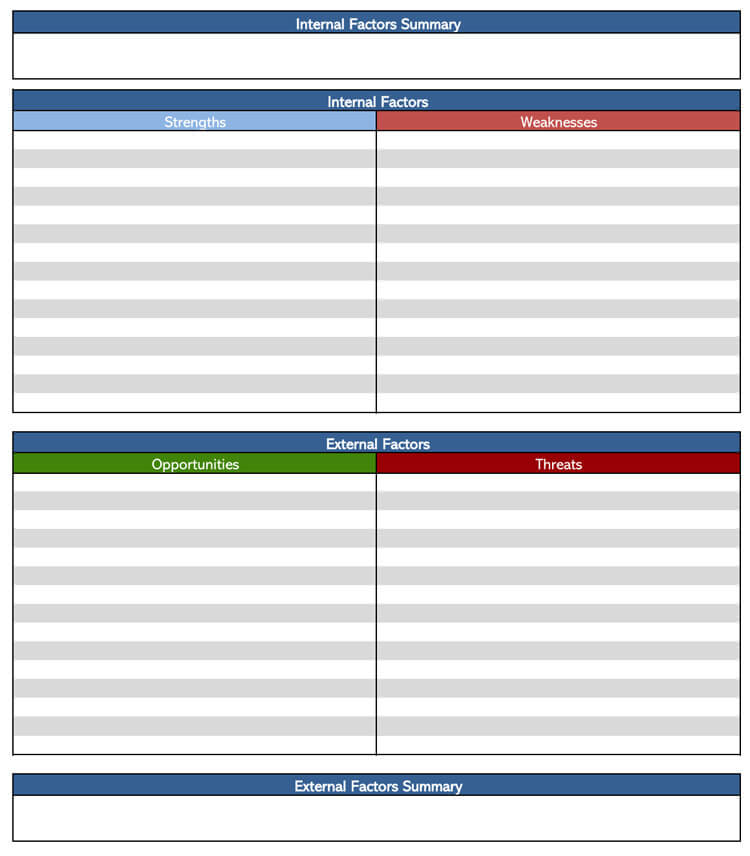
2)
Internal Vs External SWOT analysis template
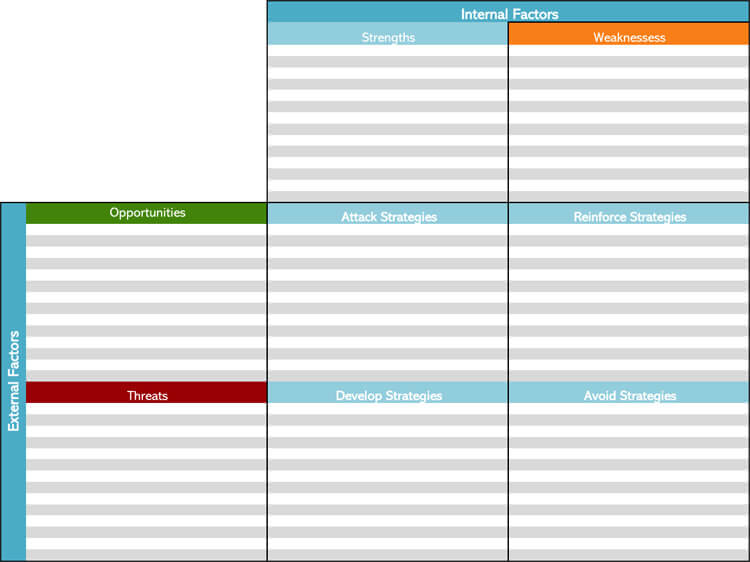
3)

4)
SWOT Analysis with Diagrams (Excel)
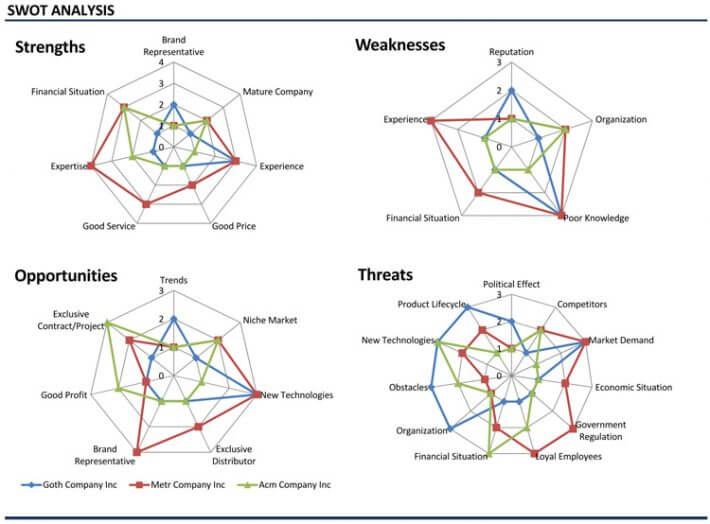




5)
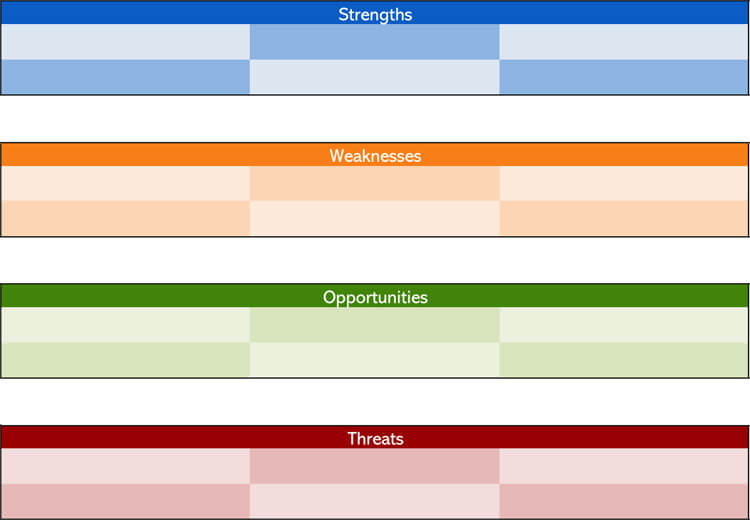
6)
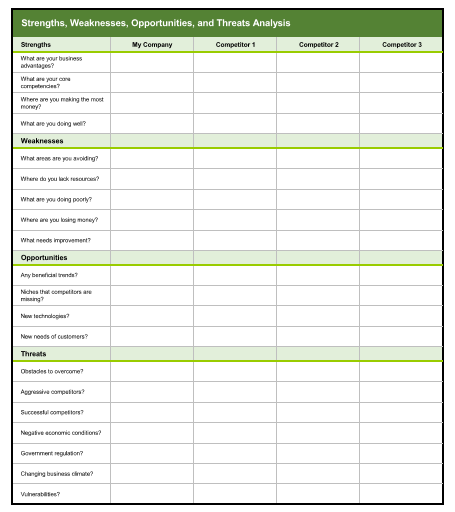
What Actually SWOT Analysis Does?
No matter if you own an eCommerce business, a small corner shop, are the CEO of a large corporation, or operate a Youtube or Patreon account, going through the time and trouble to create a goal strategy won’t mean much unless you have a way to evaluate your progress.
EXAMPLE
When you began your enterprise, you created a business plan to lay out basic objectives, goals, and secure funding.
After about a year or so, it’s time to implement a strategic plan to guide your business into the future. There are a great many business strategies out there. Maybe you created a mission and vision statement. Perhaps you even had a vision board in your office. No matter which type of business strategy you select, it is the analysis which allows you to analyze the current state of affairs, and give you an idea of where you’ll be 3 to 5 years from now.
When you implement your analysis, you are taking time to examine both the current state of your business, and its overall future potential using internal and external factors. The analysis utilizes input generated by staff, clients, and data to help you identify elements which bring you profit, versus elements which hinder your progress.
In other words, think of the analysis as a way to ensure the continued success of your business, and its abilities to meet its projected goals a year or more from now. By making the analysis an annual event, you’ll be better equipped to compete, anticipate possible pitfalls, create and execute a plan of action. Now that we have that out of the way, lets take a look at just what SWOT means.
SWOT Analysis Templates for Microsoft Word
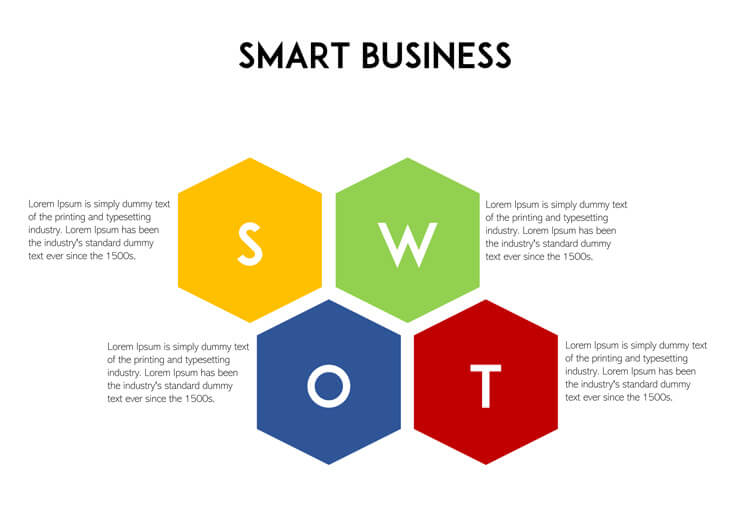
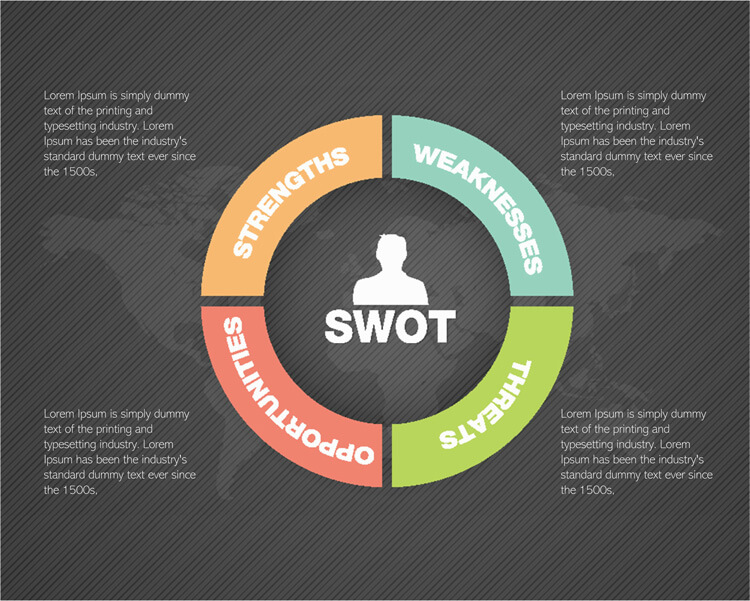
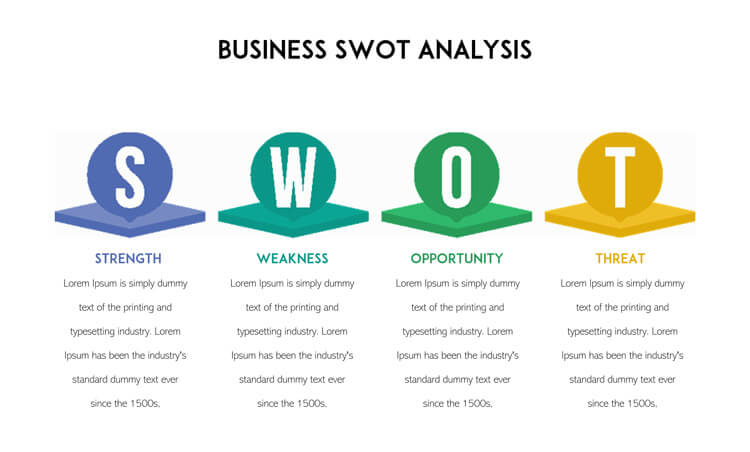
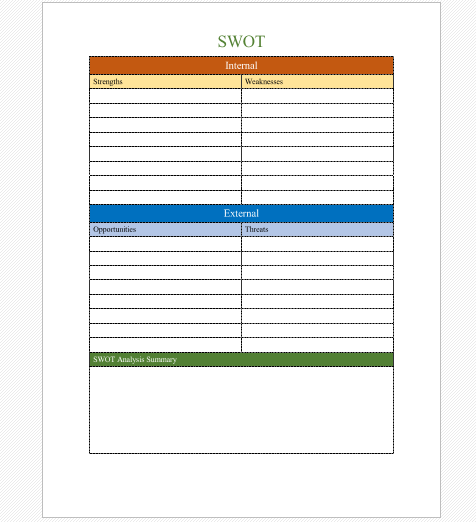
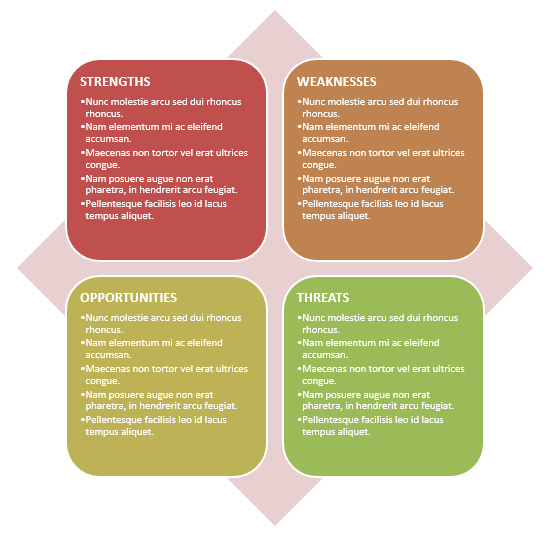
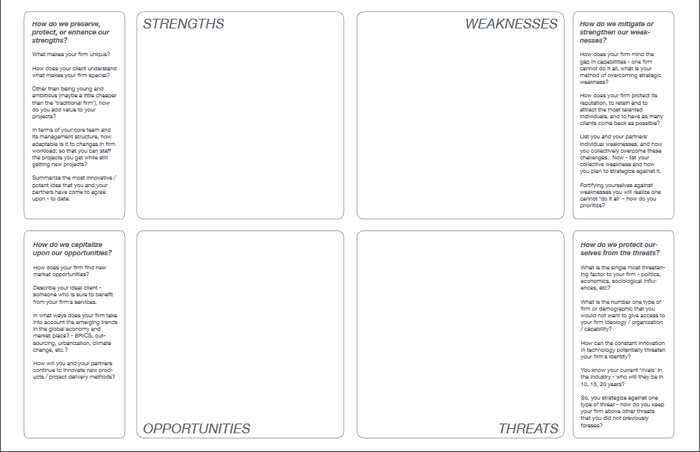
How Do You Do a Good SWOT Analysis?
Now that you have a good idea of what the analysis is, and the type of questions to ask, it’s time to actually conduct the SWOT. When you look into how to conduct the analysis, don’t be surprised to see a few variations, and don’t be afraid to create your own. What works for a video gaming company, might not work so well for a dog groomer.
First, decide who will participate in your analysis team. Next, consider whether you would like to head the analysis team, or delegate it to another member of your team. Once your team is assembled, introduce them to the process and tools you’ll be using.
A good way to think of a SWOT, is to consider it a way to ‘edit’ your business, much as you would a research paper or essay: Being ruthless when it comes to eliminating hindrances, while being smart enough to nurture elements that lead to your success.
Create your company profile
To start anything, you need a strong foundation, and analysis is no exception. When you create a company profile, you’re laying out a definitive description of your business, its goods/services produced, and your customers. If you wish to be truly informed, you may request that a profile be created for each department. This gives you a sound idea of what it is they contribute, how some contributions can be noted as successes, some in need of improvement, others to be eliminated altogether.
The importance of input
Be creative when it comes to collecting input. While all final decisions are made by upper level management, it’s the input from the ‘boots on the ground that can make all the difference. Don’t be afraid to have a customer survey or two on your website, and definitely don’t be afraid to talk to employees for input. Nothing can sink a well-ordered ship faster than unhappy, disgruntled, and resentful employees. In other words, leave no stone unturned with regards to input.
EXAMPLE
If you’ve products that need to be moved, and moved quickly, pay close attention to your company’s logistics. This means talking to warehouse workers, delivery drivers and customer satisfaction ratings.
Get your principle players together
Now, it’s time to break out the donuts and coffee, gather your team, go over the input you’ve collected so far, and come up with some great ideas. No idea is too silly, since the purpose of encouraging an outpouring of ideas is to spurn the growth of more ideas. After all, if a bad idea is presented, others will come up with new ideas to counter the bad one. Keep this meeting upbeat, remember it is designed to be a brainstorming session.
Time to put it all together
Once your brainstorming session has slowed or ended, that’s the cue to create the chart. This is nothing more than a simple grid with four boxes. Each box is labeled for the SWOT elements it represents: Strengths, weaknesses, opportunities, and threats. Next, go through your input, and place each idea in it’s appropriate box, usually in bullet format.
It’s always normal for there to be more internal issues concerning strengths and weaknesses, than external issues of threats and opportunities. This is because your team is in contact with the internal workings of your business on a day to day basis, whereas they have little control over government regulations, how quickly suppliers ship out parts, or weather concerns during important deliveries.
Remember, this imbalance can be made to work for your advantage. Encourage your team to consider the various threats and opportunities, and see if they can find ways around them, to deal with them or even get them to work to your advantage. Advantage, that’s what it’s all about. You are conducting this analysis to obtain an advantage, to ensure a smooth road of operation for 6 months, a year or more into the future. Make it count.
Transform your SWOT analysis into an actionable strategy
Finally, when all is said and done, it’s time to take your results, and transform them into executable plans. Great care must be taken here. Consider the strategies that formulate your ‘follow through’. If you cannot formulate an actionable strategy, then reconsider your Analysis. Perhaps it was too vague? Perhaps it did not ask the right questions?
EXAMPLE
If one of your weaknesses involves slow customer service, look for ways to improve that. Perhaps add a 24/7 chat option to your website, or look into how your customer service department is managed. Talk to the workers, find out if there are problems and address them.
Using mind mapping software
Mind maps are a little known, but an excellent tool when it comes to conducting your analysis. Mind mapping software, such as Freemind, helps you create an interactive, visual strategy plan for your company. Basically, you’ll be placing each aspect of SWOT as four individual nodes in the center of your map. You’ll then be able to branch out from there, adding and subtracting elements as you go in a quick and timely manner.
SWOT Analysis Template for Adobe Illustrator
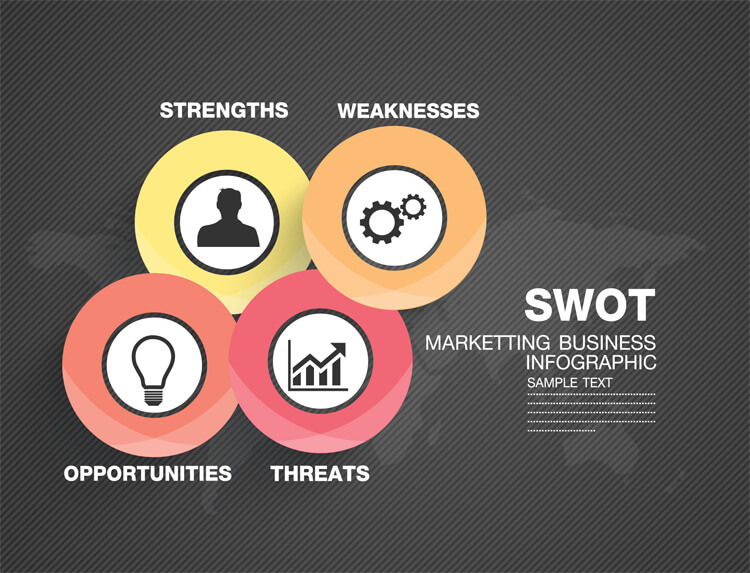
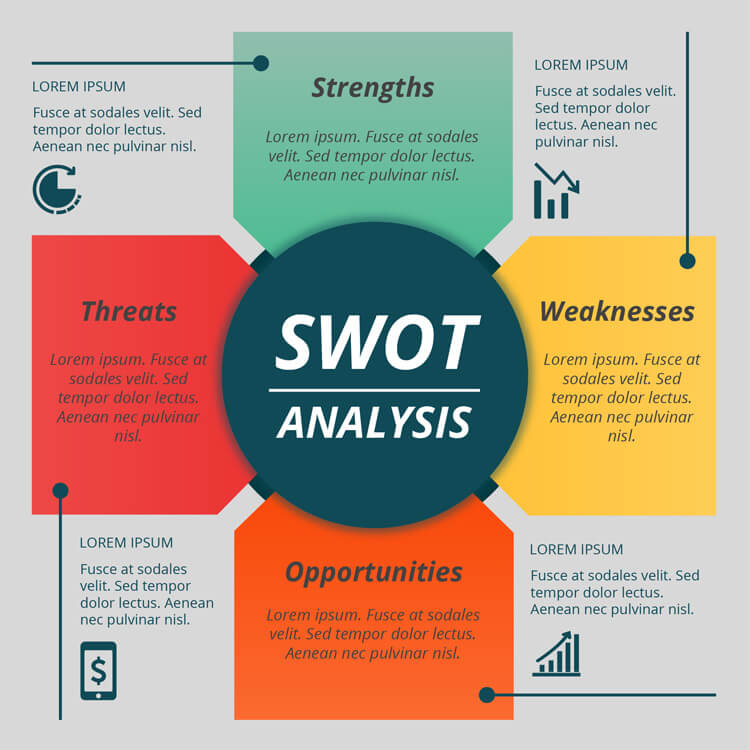
SWOT Analysis Example: Stanley’s Vegan Food Truck
Strengths
- Delicious, sought after product, fills a niche
- Repeat Customers
- Mobile Unit, Can attend festivals or park near office buildings to serve lunches
Weaknesses
- Truck upkeep, maintenance and fuel expenses
- Labor intensive, as all food is made from scratch
- Ingredients must be ordered from organic suppliers
Opportunities
- Increase visibility via social media marketing presence
- Look for local, organic produce suppliers
- Look to expand, to sell product in local health food stores
Threats
- Increased fuel costs and vehicle maintenance costs
- Organic ingredients can be pricey
- Vegan is a niche, must compete with food trucks servicing conventional food
Possible strategies
- Partner with vehicle maintenance businesses, suppliers for advertising space on the truck in exchange for a service discount.
- Apply for a small business grant for additional cooking equipment
- Open up a Kickstarter or other crowdfunding page to obtain much needed investment
Conclusion
As you can see, a SWOT analysis is useful in locating your company’s strengths, weaknesses, opportunities and threats. Properly orchestrated and carried out, the analysis allows you to create a plan that will actually work for you by allowing you to focus on areas that need to be enhanced, and areas that need to be eliminated. Remember, you want the advantage. You want to maximize your opportunities, anticipate and overcome threats to your survival, and do it all in a timely and cost efficient man







